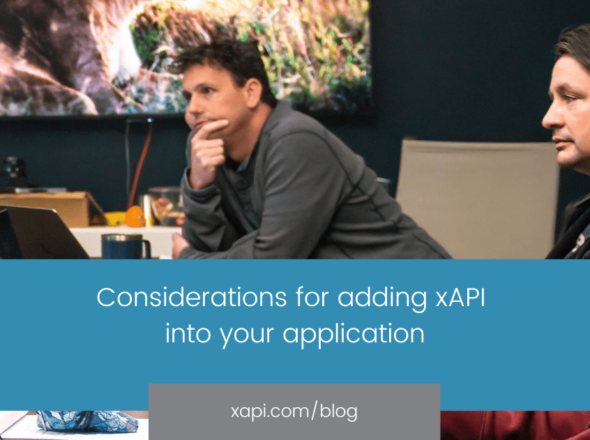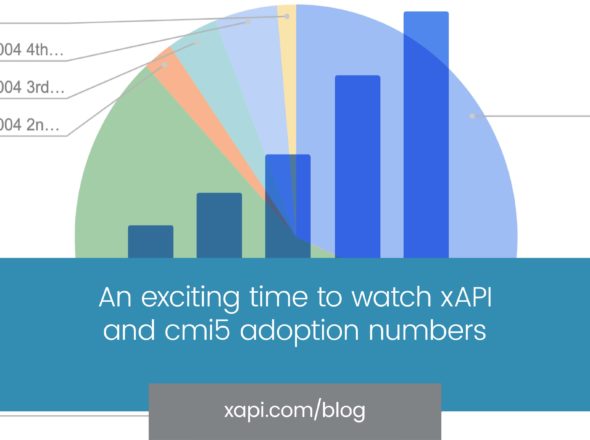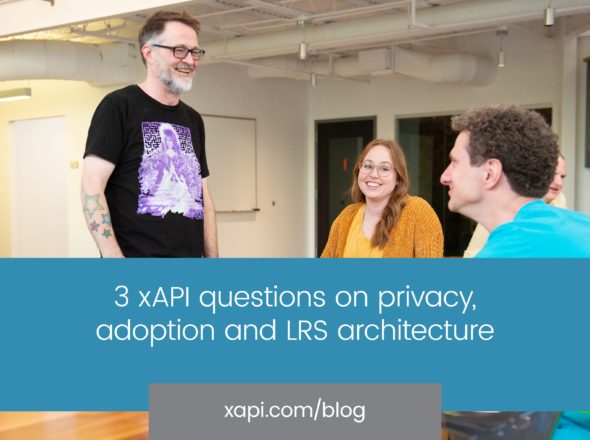An example of Experience API being used to help a traditional business use eLearning to expand their market.
When we were approached by Simpson Spence & Young (SSY), the world’s largest independent shipbroking group, to create a learning tool to help them with their marketing, we knew that our Experience API based platform would be perfect.
As ever, we started by getting to know their business and we learnt that much of their work involves arranging derivative contracts for steelmakers, mining companies, carmakers and other manufacturers, to fix the price of their raw materials and shipping well into the future. It turns out that researching the benefits of these derivatives contracts isn’t necessarily a priority for a busy steelmaker, but SSY believe that there is potential for growth in this area and wanted to educate existing and potential clients about the upside.
The myCoracle team got to work and developed a fully-fledged e-learning course in plain English, optimised for mobile tablet and PC and delivered it through a dedicated learning portal at ssy.mycoracle.com. With the learning objectives researched and developed, a content plan came together and we used our copywriting skills to bring the subject to life.
Deploying the course on the myCoracle Learning Line platform means users can record their newly acquired knowledge easily, whist starting to build their digital wallet of other learnings from around the web, and offline. We made use of large parts of the Experience API; not just the getting and receiving of statements, but also of the activity state and profile features to record progress through the course. The tracking and reporting systems help the customer, SSY, keep an eye on learner progress and that allows targeted engagement that helps turn leads into customers.
In terms of the statements, at the moment we’re mainly using four verbs: “Experienced” from the browser button, and “Visited”, “Read” and “Understood” to track progress through courses. A user gets the “visited” statement when they visit the page for the first time, “read” if they mark is as “I want to come back to this” and understood if they mark it as “I understand this and want to move on”

Our LRS then uses these statements to provide reports to returning visitors so they can pick up where they left off.
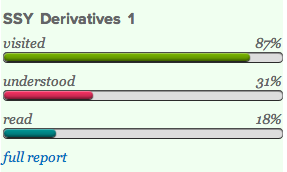
Each course is given a specific Activity Profile so that the LRS knows how long it is, what pages are in it, and optionally, the verbs in generated statements from each page. Statements within this course make use of the TinCan “context” API to store the relationship between each page and the course.
The LRS generates an Activity State for each user when they visit a course with an Activity Profile, which holds their progress through the course, i.e. which verbs have been generated from which statements for which page. Actually, we maintain two. Firstly, for each verb, the list of pages for which the user has issued a statement, and for each page, the list of verbs for which the user has issued statements.
Our reporting is currently done from these pairs of activity states, and some nice CSS!
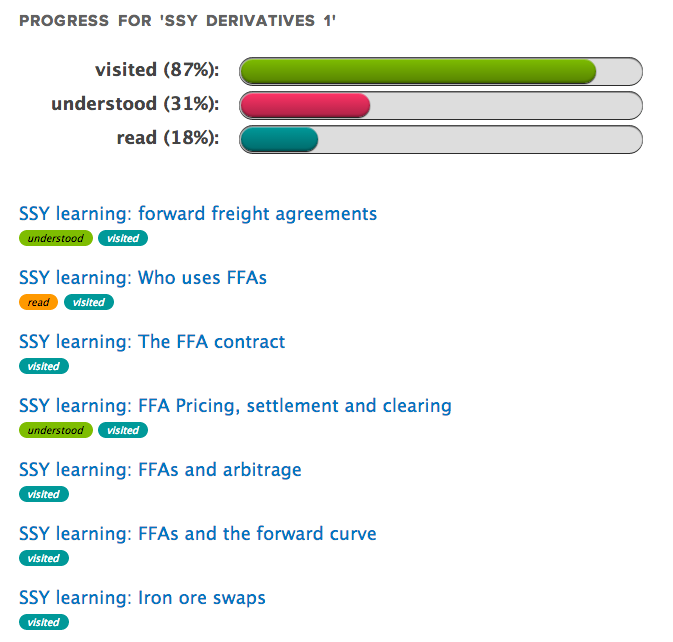
Plans for the future are to coalesce these individual reports into a bigger usage report to gather metrics to find out the average user journey through the course; to tell our client on average how far through the course people are going, and where the sticking points might be.
Commenting on the project, Duncan Dunn of SSY said:
“As our freight derivatives business has expanded, so we have acknowledged the value of providing education tools to prospective clients. The myCoracle platform is built on the concepts of open, social learning using ‘next generation’ e-learning standards. By offering content to interested learners for free, we have demonstrated that we understand and buy into the value that today’s internet can offer. It’s early days but I’m confident this new platform will play a tangible role in growing our business.”
